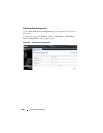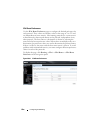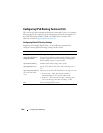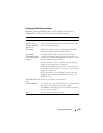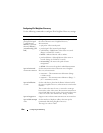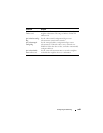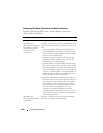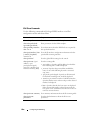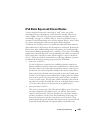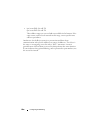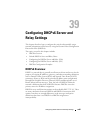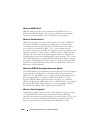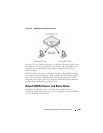
1260 Configuring IPv6 Routing
Configuring IPv6 Route Table Entries and Route Preferences
Beginning in Privileged EXEC mode, use the following commands to
configure IPv6 Static Routes.
Command Purpose
configure Enter global configuration mode.
ipv6 route
ipv6-
prefix/prefix-length
{
next-
hop-address
|
interface-
type interface-number
next-hop-address
}
[
preference
]
Configure a static route.Use the keyword null instead of
the next hop router IP address to configure a static reject
route.
•
prefix/prefix-length
—The IPv6 network prefix and
prefix length that is the destination of the static route.
Use the ::/0 form (unspecified address and zero length
prefix) to specify a default route.
•
interface-type interface-number
—Must be specified
when using a link-local address as the next hop. The
interface-type can be
vlan
or
tunnel
.
•
next-hop-address
—The IPv6 address of the next hop
that can be used to reach the specified network. A link-
local next hop address must have a prefix length of 128.
The next hop address cannot be an unspecified address
(all zeros), a multicast address, or a loopback address. If
a link local next hop address is specified, the interface
(VLAN or tunnel), must also be specified.
•
preference
—Also known as Administrative Distance, a
metric the router uses to compare this route with routes
from other route sources that have the same network
prefix. (Range: 1-255). Lower values have precedence
over higher values. The default preference for static
routes is 1. Routes with a preference of 255 are
considered as “disabled” and will not be used for
forwarding. Routes with a preference metric of 254 are
used by the local router but will never be advertised to
other neighboring routers.
ipv6 route
ipv6-
prefix
/
prefix-length
null
[
preference
]
Configure a static reject route. IPv6 packets matching
the reject route will be silently discarded.



